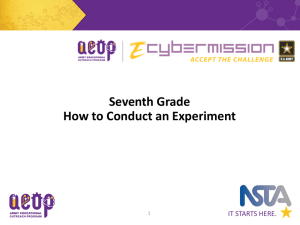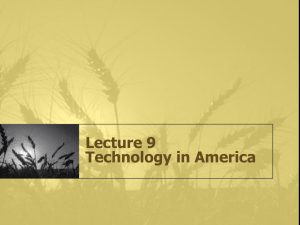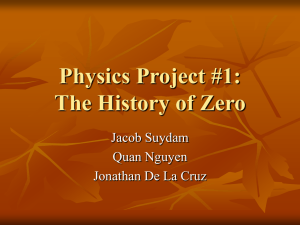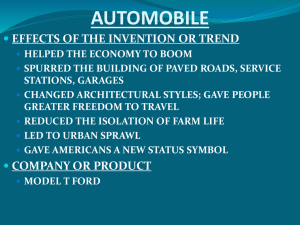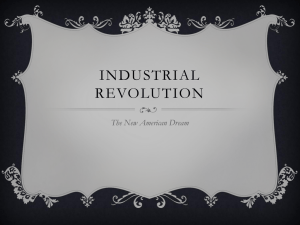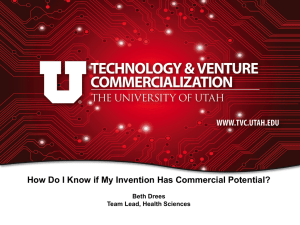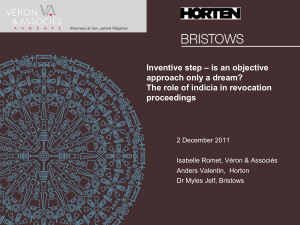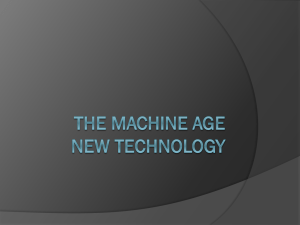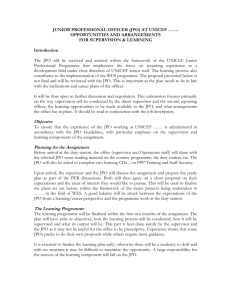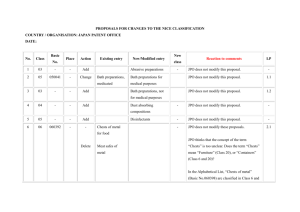Fordham IP Conference
advertisement
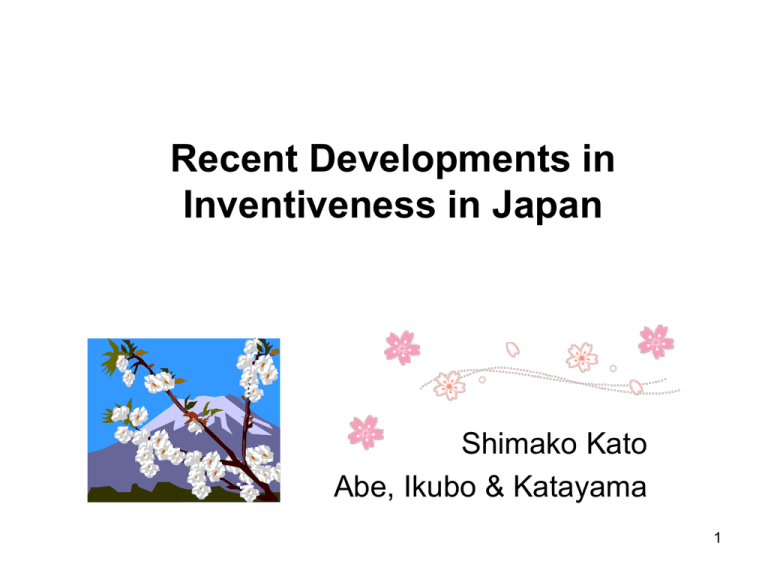
Recent Developments in Inventiveness in Japan Shimako Kato Abe, Ikubo & Katayama 1 How to find Inventiveness • Basic Tests (1) Identify the claimed invention. (2) Identify the invention of the main prior art (3) Compare the two inventions and find the differences (4) Examine whether or not a person skilled in the art can easily achieve the present invention by overcoming the differences. • “Logical reasoning” is necessary, when the result of non-inventiveness is lead based on the test (4). 2 What happened in Japan? How often does IP High Court uphold the decisions by the JPO? (Invalidation Trial) IP high court more often overturned the decisions of JPO, when patents were found valid in JPO. 3 Revision of Examination Guidelines(2000) • “Logical reasoning of non-inventiveness can be justified from the various and wide variety of aspects.” • Combination of prior art references can be justified in following case: - In case where invention is done by just patchworking elements which have no functional relationship. - Common technical field - Common problem to be solved - Common function • following description was eliminated with the revision in 2000. “ Bear in mind that if things are posteriori examined based on the knowledge from specification of the present patent, it seems that it can be easily reached to the invention.” 4 What happens in Japan?(1) How often does JPO find patents Invalid? (Invalidation Trial) 5 What happens in Japan?(2) How often does IP High Court up hold the decisions by the JPO? (Invalidation Trial) IP high court more often overturned the decisions of JPO, when patents were found Invalid in JPO. 6 Recent Decision(1) Xylitol composition case (Judgment on March 25,2009 by IP high court) Claim: • A composition for nasal administration for treating or preventing nasal congestion • Composition: a xylitol solution, wherein said solution comprises 1- 20 grams of xylitol in 100 cc of water. 7 7 Recent Decision(1) Xylitol composition case (Judgment on March 25, 2009 by IP high court) cont. BOA decision (JPO):Non inventive based on the D1 and D2. D1: Oral liquid administration to cure upper respiratory infection caused by S. pneumoniae, wherein said preparation contains 400 mg of xylitol in 1ml of solution. D2 :shows that anti-infective aerosol drug is administrated to nose to prevent lower respiratory infection. Also the document shows that the dosage amount can be reduced, if anti-infective drugs are 8 locally administrated. 8 Recent Decision(1) Xylitol composition case (Judgment on March 25, 2009 by IP high court) cont. IP high court finding: Inventive Grounds “In the process of finding non- inventiveness, expost analysis and unreasonable reasoning should be avoided. At the process to understand the problem to be solved of the present invention, you have to bare in mind not to unconsciously include “means for solving the problem” or “results” therein ” 9 9 Recent Decision(1) Xylitol composition case (Judgment on March 25, 2009 by IP high court) cont. “Further, for finding non-inventiveness, suggestions with which a person skilled in the art would reach the technical feature of the present invention should be included in prior arts. The suggestion with which a person skilled in the art could reach the feature is not enough” (The same judgment was shown in circuit adhesive case (Judgment on January 28, 2009)) 10 10 Recent Decision(2) Sunscreen case (Judgment on July 15, 2010 by IP high court) Claimed invention (after amendment, simplified) Chemical composition preferable for sunscreen comprising: a) UVA activator b) Stabilizer c) 2-phenyl-benzimidasol-5-sulfonic acid as UVB activator d) career UVA→PPD UVB→SPF Sunscreen Description in the Specification - Advantage of using 2-phenyl-benzimidasol-5-sulfonic acid as UVB activator is not described based on data. - Embodiment shows only the preparation of the compound. 11 Recent Decision(2) Sunscreen case (Judgment on July 15, 2010 by IP high court) cont. BOA finding: Non inventive based on the prior art Prior art - Sunscreen comprising a), b), and d) . Common UVB activator can be contained optionally. - Applicant submitted experimental data of SPF and PPD at the time of trial at JPO. Grounds - 2-phenyl-benzimidasol-5-sulfonic acid is one of the common UVB activator. - The data of SPF and PPD submitted in the trial cannot be taken into consideration, because such advantageous effects 12 was not described in the specification. Recent Decision(2) Sunscreen case (Judgment on July 15, 2010 by IP high court) cont. IP high court finding: Inventive Grounds (summary) - Unless the circumstances are exceptional, it is not allowable to take into consideration experimental data submitted after filing, because it would harm the equity of applicant and third party. - On the other hand, if there is a description to be understood or deduced the “advantageous effect”, experimental data submitted after filing is allowed to be considered, unless they are not beyond the description. Whether or not it is allowable should be judged in terms of fairness. 13 Recent Decision(3) Evaluating method for greaseproof power case (Judgment on May 27, 2010 by IP high court) Claim: a) Fix and a surface of tested material at a specific angle b) Put pseudo oil spot which contains oil and carbon black c) Drop water on the surface higher than Water the pseudo oil spot d) Evaluate greaseproof power based on the residual pseudo oil spot Pseudo oil spot Problem to be solved: Reduce the burden and cost of evaluation Tested material 14 14 Recent Decision(3) Evaluating method for greaseproof power case (Judgment on May 27, 2010 by IP high court) cont. BOA finding: Non inventive mainly based on the prior art reference A and other document C Tile Prior art reference A ・Claimed invention: Specific hydrophilic base material ・Advantageous effects of the material is evaluated in the specification. c) Evaluation of color difference and gloss level a) Fix surface of a tested material at 45 degree b) Drop suspension which contains carbon black and other material and dry out 15 minutes c) Drop distillated water and dry out 15 minutes d) Repeat b) and c) 25 times e) Measure color difference and gloss level b) 45 degree 15 15 Recent Decision(3) Evaluating method for greaseproof power case (Judgment on May 27, 2010 by IP high court) cont. IP high court finding: Inventive Grounds (summary) -The prior art A does not show the problem to be solved of reducing the burden and cost for evaluation. Instead, the description of repeating step b) and c) at 25 times shows that the prior art A aims to obtain accurate and objective data. - BOA lead the result based on subjective view. 16 16 Recent Decision(3) Evaluating method for greaseproof power case (Judgment on May 27, 2010 by IP high court) cont. Grounds (summary) -The present invention is not complicated but consists of simple steps and it remains to be found that skilled person could take those steps to solve the problem of the invention. In that sense the different results might be lead as to inventiveness of such simple invention. Therefore, for leading the result, subjective view or instinct should be avoided and so that a judgment is more predictable. For the purpose, it is required to complete logical process based on the well known basic test of finding non inventiveness. 17 17 Discussion(1) (1) More careful examination on non inventiveness - Approach to eliminate hind sight analysis. - More emphasis on problem to be solved of the invention and technical meaning of invention. - More emphasis on motivation to overcome the difference between the present invention and prior art. - Importance of logical approach. (2) Pro-patent trend? -IP high court admit ex-post submission of data regarding advantageous effects based on the broader description of the specification. Will JPO’s strict practice about ban on ex-post submission of data be loosened? 18 Discussion(2) (3) Similar trend in other chambers of IP high court? - Cyclic telecommunication system case (Judgment on December 8, 2010 by IP high court) : Lack of motivation to reach the present invention - Expansion valve case (Judgment on February 8, 2010 by IP high court) : Prior art teaches away from the technical feature of the present patent. - Organic electroluminescence device case (Judgment on November 18, 2010 by IP high court) : Obvious to try approach was applied to the invention of organic EL device. 19 Thank you! Shimako Kato Patent Attorney Abe, Ikubo &Katayama E-mail: shimako.kato@aiklaw.co.jp 20
